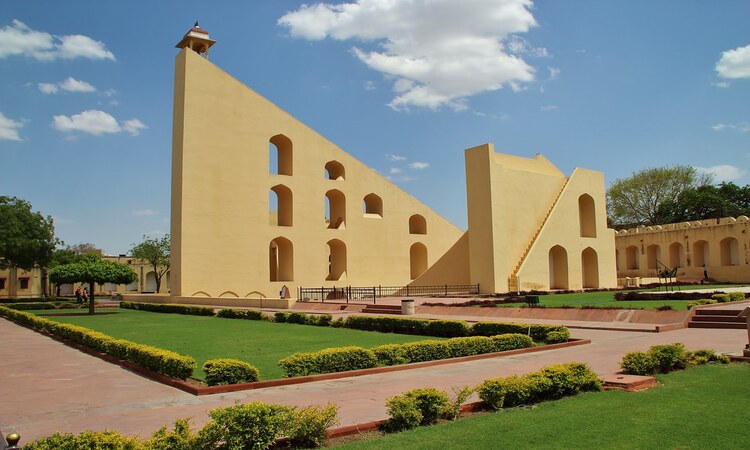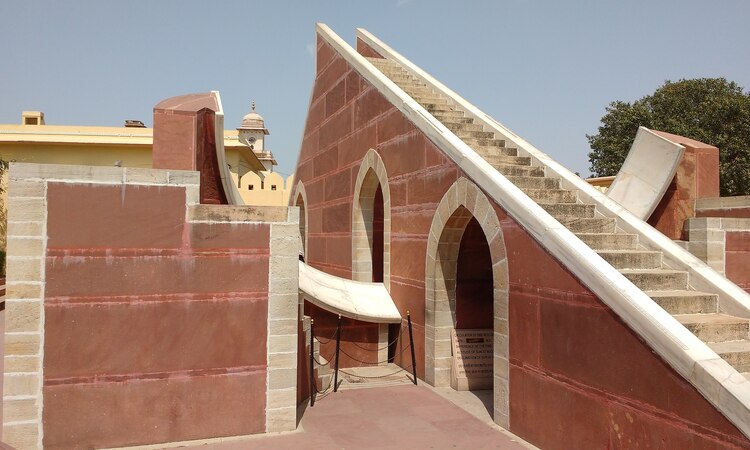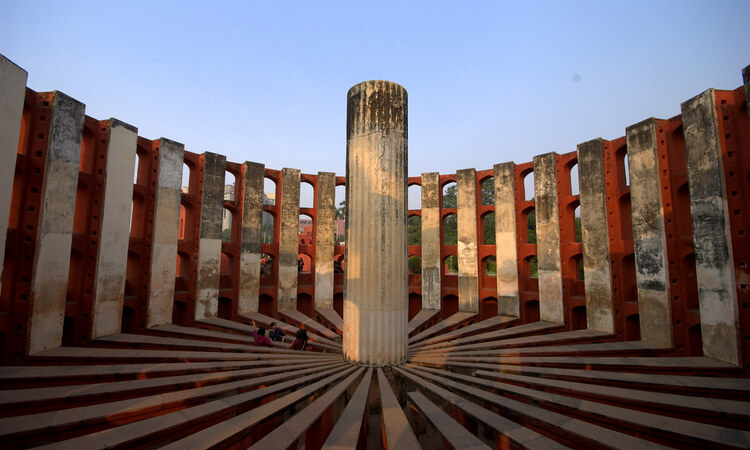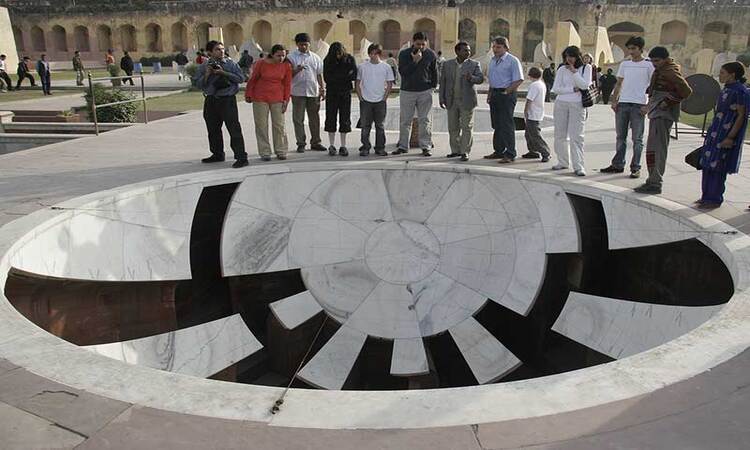Inaugurated in 1734 by Rajput King Sawai Jai Singh II, Jantar Mantar in Jaipur is an astronomical observatory that features the largest sundial in the world. It is a UNESCO World Heritage Site that is an essential part of every tourist’s itinerary. There are five such sundials in India.
Maharaj Sawai Jai Singh had commissioned the construction of the sundials in various parts of the country. The other sundials were located in Delhi, Mathura, Varanasi, and Ujjain. The Jaipur Sundial is the grandest while the one in Mathura is almost in ruins.
Besides his political expertise, the Maharaja was also a scholar in various subjects such as mathematics, physics, and astronomy. He used his extensive knowledge in these fields to help in the construction of the sundial.
The Most Notable Instruments of the Jantar Mantar
The Jantar Mantar consists of 19 instruments that measure the distances and positions of heavenly bodies. The instruments are intricate stone structures shaped geometrically and help to track the position of stars as the earth revolves around the sun.
The most popular instruments of the Jantar Mantar among tourists are:
Vrihat Samrat Yantra
Located at the centre of Jantar Mantar, Vrihat Samrat Yantra is renowned as the tallest sundial in the world. It is an equinoctial sundial of large proportions and is sometimes known as the supreme instrument.


(Image Credit: Flickr)
While it is a simple instrument and not very different from sundials in use for centuries, the Samrat Yantra is notable because it measures time with unprecedented precision. The instrument is capable of measuring time with an accuracy of two seconds.
The most important components of the Samrat Yantra are a pair of quadrants on both sides that are parallel to the equator and the gnomon. The latter is a triangular wall and its hypotenuse is parallel to the earth’s axis.
Laghu Samrat Yantra
The Laghu Samrat Yantra whose name means “The Small Sundial” calculates times with an accuracy of 20 secs. The ramp on The Small Sun Dial points to the North Pole.

(Image Credit: Wikimedia Commons)
This allows the time in Jaipur to be calculated easily using the position of the ramp’s shadow on the divisions of the fine scale. The position of the shadow of the sundial’s triangular wall tells the local time of Jaipur.
Ram Yantra
The azimuth and elevation of the planets and the sun are measured by the Ram Yantra. For those who may have found this confusing, the azimuth refers to the angle between the north and a celestial body. The instrument is made up of pair of tube-shaped structures, open to the sky.

(Image Credit: Flickr)
Both structures have poles at their respective centers and each of these poles is of equal height. Scales indicating the azimuth of extra-terrestrial bodies and angles of altitude are inscribed inside the walls of the structures.
The Ram Yantra is used for the observation of the positions of celestial bodies by aligning objects in the sky with the top of the central pillar. The point of the wall or floor then completes the alignment. Every night, the stars and planets are aligned with the top of the pillar falling on the wall or floor by an observer.
Jaya Prakash Yantra
Another notable attraction of the Jantar Mantar, the Jaya Prakash Yantra is comprised of two hemispherical bowls-like sundials with graded marble slabs. It may very well be the most complex and elaborate instrument constructed by Jai Singh.
(Image Credit: jantarmantar.org)
It has been inspired by concepts dating as far back as 300 BCE when a hemispherical sundial was made by Greco-Babylonian astronomer Berosus. Jaipur’s Kappala Yantra is an example of this sort of dial.
Hemispherical sundials are also a common feature in early medieval European Architecture. However, the Jaya Prakash is far more complex in comparison to any of its predecessors.
The dial is a bowl-shaped instrument built partially above ground and partially underground. The surface of the interior is divided into segments with observers gaining access through recessed steps within these segments.
Timings & Best Visiting Hours
Noon is when the sun will be directly above the Jantar Mantar making it the best time to visit. This is because this position of the sun in relation to all of the instruments of the observatory makes it easiest to comprehend the interpretations of their readings.
Jantar Mantar General Visit Timings
- General Visit Hours - 9 am to 4 pm
Jantar Mantar Light and Sound Show Timings
- Oct – Feb: Begins 6:30 pm
- Mar–Apr: Begins 6:30 pm
- MaySep: Begins 6:30 pm
Trains to Jaipur
Trains from Delhi to Jaipur
- 12414 JAT AII EXPRESS – Old Delhi to Jaipur
- 25014 CORBET PRK LINK – Old Delhi to Jaipur
Trains from Lucknow to Jaipur
- 14863 MARUDHAR EXP – Lucknow to Jaipur
- 19716 GTNR JP EXP – Lucknow to Jaipur
Trains from Chandigarh to Jaipur
- 19412 DLPC SBIB EXP – Chandigarh to Jaipur
Trains from Udaipur to Jaipur
- 12991 UDZ JP EXP – Udaipur City to Jaipur
- 12982 ASV JP SF EXP – Udaipur City to Jaipur
Trains from Indore to Jaipur
- 12973 INDB JP SF EXP – Indore to Jaipur
Trains from Mumbai to Jaipur
- 12979 BDTS JAIPUR SF – Mumbai Bandra Terminus to Jaipur
- 12955 MMCT JAIPUR SF – Mumbai Central to Jaipur
Time Set In Stone
The Jantar Mantar is in many ways a time capsule representing the brilliance of Indians in the eras gone by. Not only is this talent cultural and aesthetic but there has also encompassed such disciplines as astronomy, physics, and engineering.
Through the ages, such timeless monuments have been a consistent defining feature of the subcontinent. It is only apt that one would find in India, a timeless monument to time itself.

